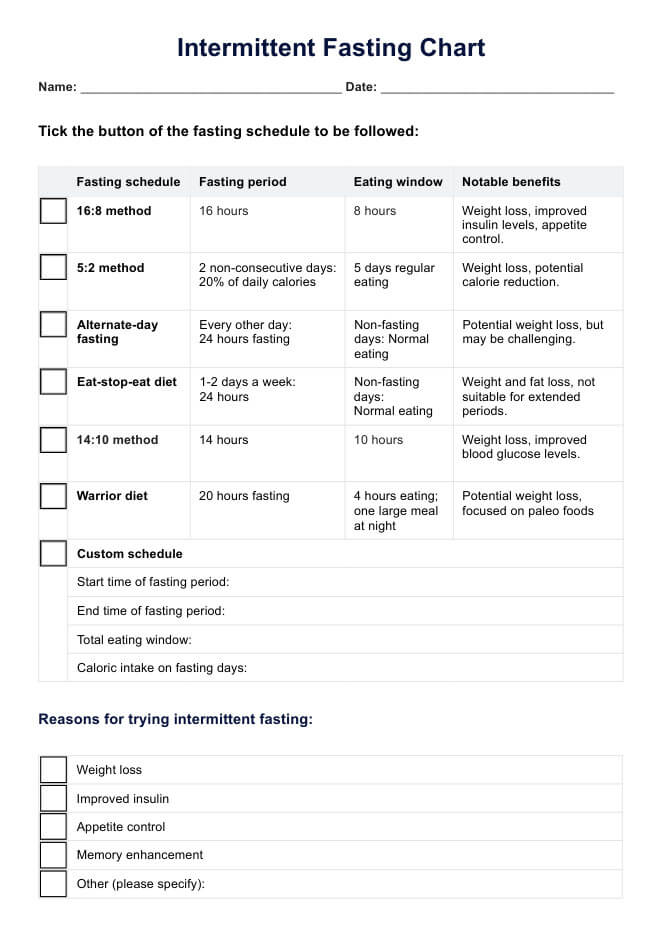Two of the most popular intermittent fasting schedules are the 16/8 method, which involves a daily 16-hour fasting window and an 8-hour eating window, and the 5:2 method, which alternates between five regular eating days and two non-consecutive low-calorie days. The best intermittent fasting schedule depends on your lifestyle and preferences.

Intermittent Fasting
Enhance your client's fasting routine with an Intermittent Fasting Chart. Monitor progress, set goals, and track fasting schedules efficiently.
Intermittent Fasting Template
Commonly asked questions
Several factors determine weight loss, so the amount of weight you can lose in a month can vary significantly. Still, there have been reports of people losing about 4 pounds for the 16/8 method and even 5-6 pounds for alternate-day fasting.
There are several factors that could influence whether you lose weight or not, such as your caloric intake being too high, your food choices, excessive food intake during the eating window, lack of exercise, hydration, metabolism, hormonal balance, and genetics. It might help to impose a calorie restriction to ensure that you are not creating a calorie surplus during the eating window.
EHR and practice management software
Get started for free
*No credit card required
Free
$0/usd
Unlimited clients
Telehealth
1GB of storage
Client portal text
Automated billing and online payments











